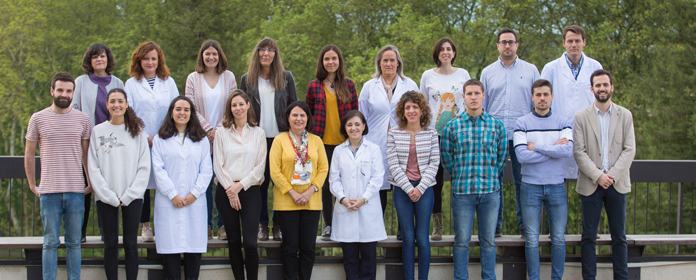A congress brings together more than 60 food safety experts at the University.
The network National MICOFOOD researches on mycotoxins such as acratoxin A, dangerous to health due to its presence in vegetables and cereals.

PHOTO: Manuel Castells
The national network on mycotoxins and toxigenic fungi MICOFOOD has met at the School of Pharmacy and Nutrition of the University of Navarra. More than 60 food safety experts from the universities of Extremadura, Complutense de Madrid, Santiago de Compostela, Zaragoza, Lleida, Autónoma de Barcelona, Granada, Valencia, the CSIC and the University of Navarra itself participated in the meeting .
The researcher Elena González Peñas, one of the heads of the group MITOX of the University of Navarra -organizer of the meeting-, explains that "these toxic compounds are produced by some fungi and appear in raw materials and foodstuffs. They can be dangerous for human and animal health, although only a few of the 200 to 300 mycotoxins known to be harmful".
Producing fungi can develop on vegetables and cereals, for example, which we then give to animals or consume. "In addition, these toxins can pass into animal products (milk, meat or eggs), and then reach humans. The presence of mycotoxins in feed and food is very difficult to avoid. They cannot be detected by sight, smell or taste and are a worldwide food safety problem", warns the expert.
Among them, aflatoxins and ochratoxin A stand out for their toxicity. "Aflatoxins are the most dangerous, as they are classified by the International Agency for Research on Cancer research as carcinogenic to humans. Ochratoxin A causes kidney damage. Other mycotoxins alter the immune system - fumonisins - or the endocrine system - zearalenone - ", adds Professor González Peñas.
Legislating mycotoxin limits in Spain and EuropeAccording to the experts of the network MICOFOOD, it is essential to know the behavior of fungi producers to avoid their development, know the presence of these compounds in food and raw materials and study the toxic effects they can produce. "This information is useful for the regulatory bodies of Spain and the European Union to legislate maximum limits of mycotoxins that should not be exceeded in food and thus guarantee consumer safety", emphasizes Elena González Peñas.
The group of research MITOX is a group multidisciplinary that started its activity in 1996 with the study of the presence of ochratoxin A in human plasma in Navarra. Later, the research has been extended to the presence of this and other toxins in different foods -such as wine, coffee, cocoa, cereals, milk, etc-. One of his recent investigations analyzed cow's milk from the market and from Spanish farms and found no contamination of any of the 22 mycotoxins studied. The group also conducts programs of study toxicity tests. One of them has evaluated the impact of sex, age, feed intake and other factors on the toxic effects of individual mycotoxins, such as ochratoxin A; as well as mixtures of them, such as aflatoxin B1 and ochratoxin A.
